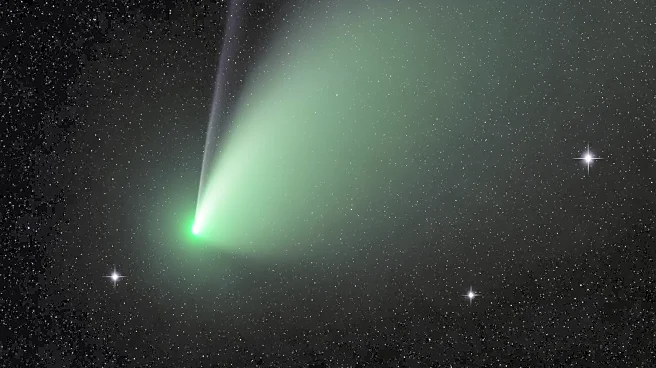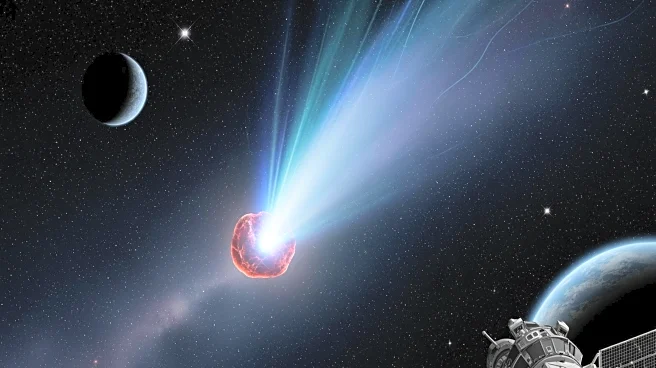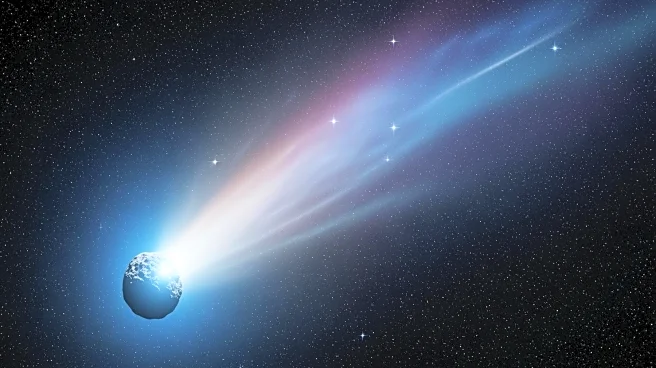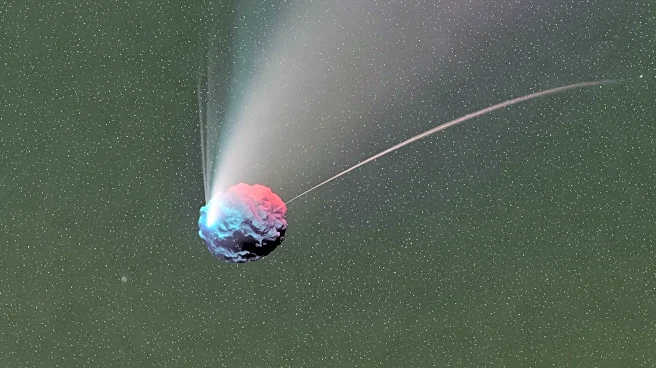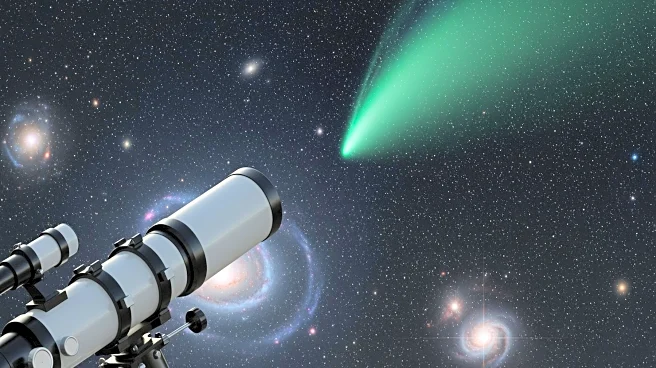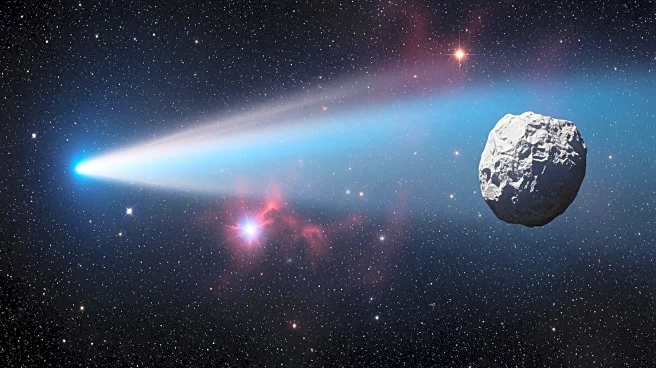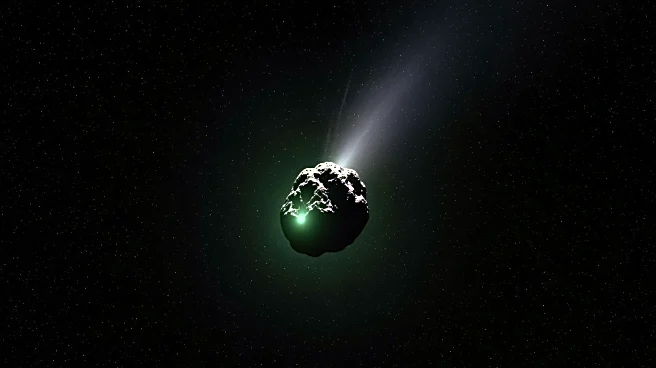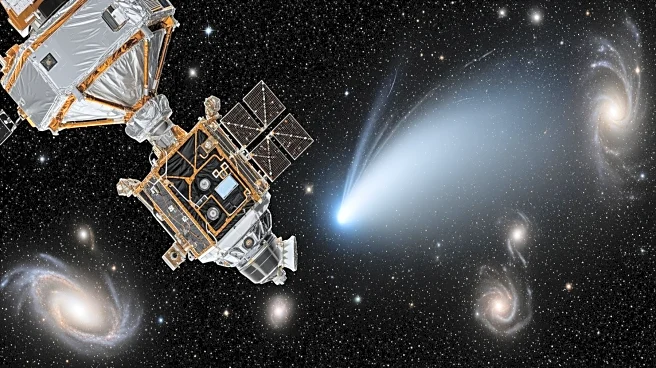What's Happening?
Comet 3I/ATLAS, an interstellar visitor, is currently visible in the predawn sky, exhibiting a green glow due to diatomic carbon fluorescence. Recent images from the Lowell Discovery Telescope have debunked
myths about the comet changing color, clarifying that the perceived color shifts are due to observational filters and gas emissions. The comet's tail appears hidden due to its viewing angle from Earth. The International Asteroid Warning Network has closed registration for an astrometry campaign focusing on 3I/ATLAS, set to begin later this month. Observers can track the comet using small telescopes, as it is visible low in the eastern sky in the constellation Virgo.
Why It's Important?
The appearance of 3I/ATLAS is significant as it is only the third known interstellar object to visit our solar system, following 1I/ʻOumuamua and 2I/Borisov. Its study provides valuable insights into the composition and behavior of interstellar comets. The comet's green glow, caused by diatomic carbon, offers a unique opportunity for scientists to study its chemical makeup. The global scientific community is mobilizing to observe and analyze the comet, with agencies like NASA and ESA participating in the effort. This event enhances our understanding of interstellar objects and their trajectories, contributing to the broader field of astronomy.
What's Next?
The comet will be closest to Earth in mid-December, providing further opportunities for observation and study. The upcoming astrometry campaign will refine tracking techniques and contribute to the scientific understanding of interstellar comets. Observers are encouraged to view the comet soon, as visibility improves as it moves away from the Sun's glare. Continued observations will likely yield new insights into the comet's structure and composition, with results expected from the coordinated global campaign.
Beyond the Headlines
The study of 3I/ATLAS may reveal long-term effects of cosmic radiation on interstellar objects, as modeling suggests its exterior has been altered by billions of years of exposure. This could impact how scientists interpret data from such objects. The comet's visit underscores the importance of international collaboration in space observation, as agencies worldwide contribute to the understanding of rare interstellar phenomena.
